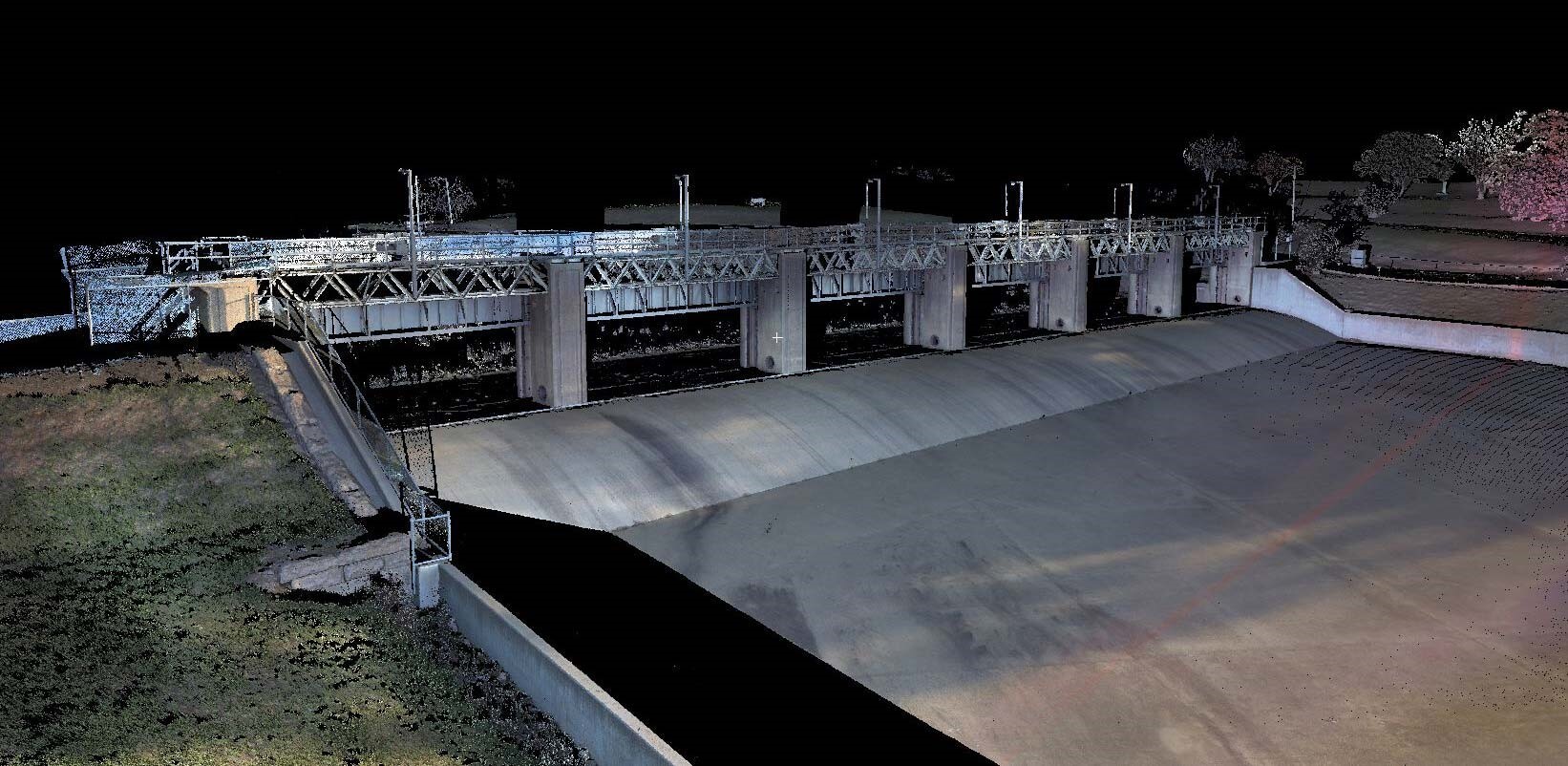Improving safety and reducing costs with 3D scanners
The importance of dam safety
Dam safety matters. Dam monitoring plays an essential role in evaluating the structural safety conditions of dams and mitigates against dam breaches. To monitor effectively, we need to utilise innovative technologies and processes like 3D scanners, to identify surface displacements, especially when analysing safety in the long term.
The history before scanners
Up till recent years, the determinations of structural safety conditions were made by measuring discrete targets or surface marks at large intervals, by conventional surveying techniques. This methodology provides only a discrete sample instead of a sophisticated mathematical model of the ground surface or dam structure. Fortunately the development of 3D scanners over the past 10 years has achieved a new level of accuracy and density of survey data. Whilst 3D scanning does not replace conventional survey methods for monitoring, it creates a far more precise global definition of structures such as dams, buildings, bridges and the like. New scanning techniques mean new data can be captured 50 fold compared to the older days where they were picked up point by point.
Scanners are not new, just underutilised
This is not new technology, in fact it has been available for around 10 years, but its full capacity hasn’t yet been realised by the architectural, engineering, construction and surveying professions. Just like how smart phones of 2007 look and function very differently than those of today.
Advances in technology have overcome previous doubts over accuracy, range and capacity to handle large datasets. The good news is that enhancements in these areas have made these highly intelligent and informative systems cost effective in today’s competitive market.
What makes 3D scanners so special?
3D scanners represent the latest in progressive dam engineering. They are a model-based (point cloud) process that provides insight to help you plan, design, construct and manage buildings and infrastructure. The advantage is that point clouds provide a high level of detail which reduces calculated guesswork and means you can make better design decisions. Accuracy is substantially improved from the design to the construction phase. 3D scanners improve efficiency and meet expectations for service quality. This streamlined planning and design delivers higher-quality projects. The capacity of the scanner enables the complete separation of the ‘data gathering’ function and the ‘data interpretation’ tasks. The process of collecting and interpreting the data on a regular basis is now seamless, with proven and accurate results.
How does it compare?
Although other survey and CAD based software can be used to measure dimensions of a structure, but 3D analysis software allows us to compare surveys undertaken at different times and can easily recognise areas of deformation by the use of deviation colour maps. This leads to the early identification and treatment of cracks, slides, the need for concrete repair, or the ability to address erosion and seepage. 3D scanners support safety management as the speed of issues detection is accelerated and situations can be rectified earlier.

How is SMEC using 3D scanners?
We provide our clients with access to this state of the art spatial data solution. The capacity of our 3D scanner and associated software allows for viewing of objects overlaid with rectified imagery (collected simultaneously with the scan). The resulting image is geometrically correct and of sufficient definition to assist in the examination of point cloud data and surface models.
Without a doubt, 3D scanners offer a greater level of data collection to reduce maintenance and insurance costs for our clients, and provide a higher standard of data collection, monitoring, condition assessment and emergency planning.
Perspectives, developed by SJ Academy, is our platform to explore new ways of tackling some of today’s most complex challenges. We draw on ideas and opinions from our staff associates and experts across different businesses. Click here to read more about Technology & Innovation, Infrastructure & Connectivity, and Design Leadership.



 下载文件
下载文件
0 comments